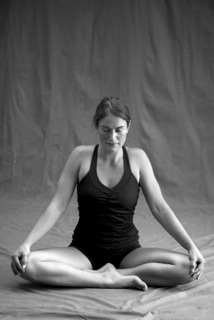The practice of yoga asana (hatha yoga, taking postures) came into being as a way to quiet the states of the mental, emotional, and physical body, which disturb one’s concentration while in the practice of meditation (Dhyana).
Hatha Yoga and Dhyana are each one of the eight limbs of yoga described in the Yoga Sutras of Patanjali.
Like gaining ease in one’s ability to touch their toes over a cumulative amount of time to a dedicated asana practice, when one dedicates their time to a regular meditation and spiritual practice as well, one becomes a Siddhi. The Sanskrit word Siddhi translates to adept, sage, or perfect master; one who has gained abilities, powers, and attainments through their Sadhana (spiritual practice) such as (Hatha Yoga) asana and (Dhyana) meditation. Siddhasana therefore, gets its name as a result of the benefits gained in the cumulative practice of Dhyana alongside Asana and the other six branches of yoga.
To practice Dhyana in Siddhasana, sit with enough height beneath your seat that the fronts of your hip flexors are relaxed, and cross your ankles. This pose is wide through the knees, ankles in line with each other. Both feet may rest on their outer edges, or if it is comfortable for your body, one foot may rest atop the opposite ankle. Feel your sitting bones drawing back behind you and gently scoop your tailbone forward toward your feet. Rise tall in your spine, relaxing your shoulder blades down your back.
Turn your attention to your breath or a mantra, and practice the quieting of the mind stuff. Stay as long as you like.

